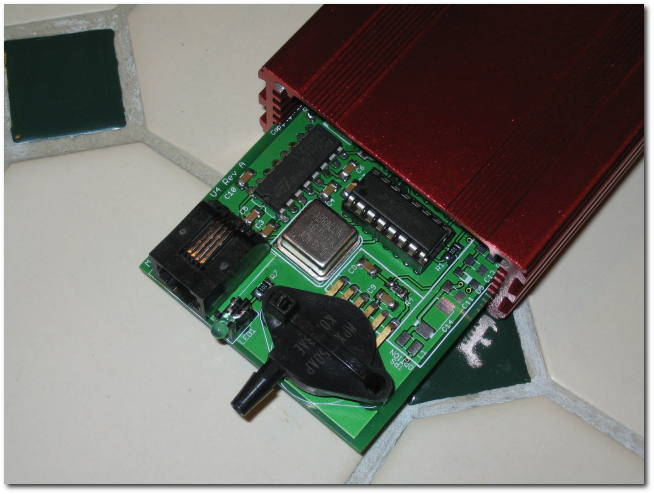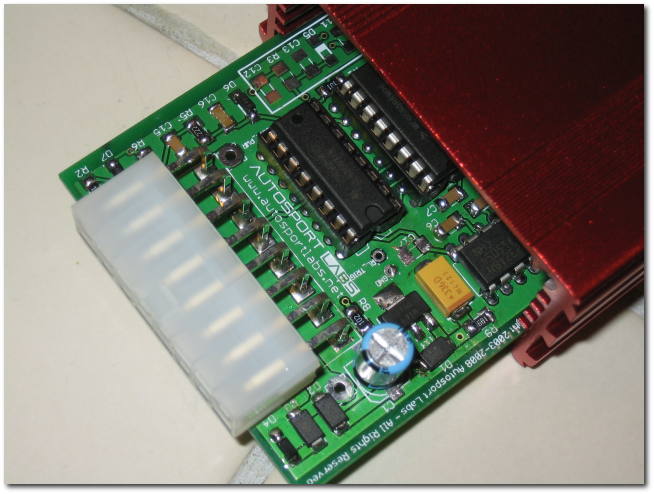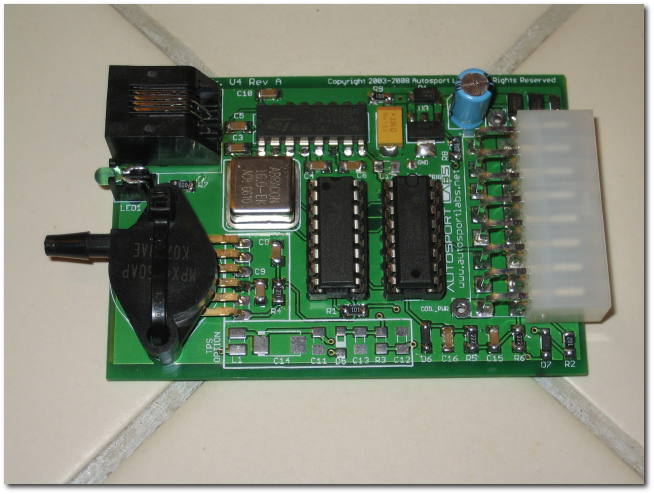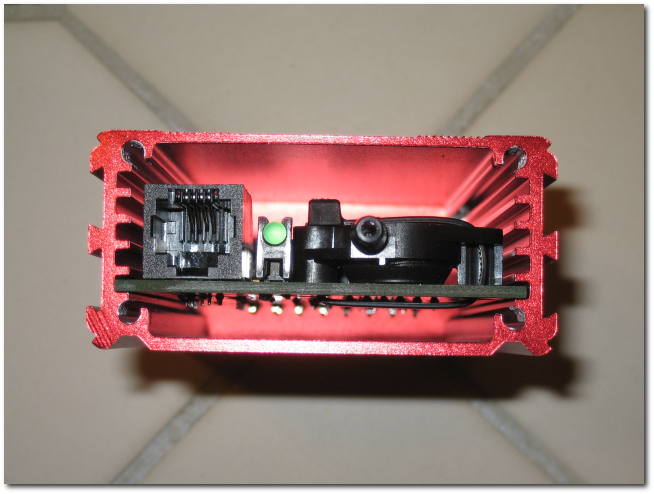We identified a new processor, the HC908QB8 processor from Freescale, which is very similar in capability and offers a bit more RAM to play with. Once we realized porting the existing V3 code would be fairly easy, we set out to adapt it to the existing V3 board. As it turns out, we couldn't leave an old design alone- there were some annoyances and fixes that really needed attention.
If the pictures make the changes seem dramatic, they're not really. Realize that V4 is functionally identical to V3, save one new feature. Here's the summary list of changes:
* New processor with V3 ported code
* New board design replaces discretes with 1206 and larger surface mount components, to retain relatively 'DIY friendly' kit build-ability.
* New fancy case
* New temp/ aux input circuit with firmware support
* Pads to integrate case mounted hard rev limiter
* Corrected option Input circuit- simplifies switch wiring
* TACH_OUT improvements- now with 12v 50% duty cycle output
* Addition of power LED
* space-saving RJ11 connector for PC serial connection
* moved MAP sensor to eliminate tube and bulkhead fitting
For V3 users- you're haven't been left behind!! The same temp/analog input feature can be enabled via the 'AUX' pad on your board plus some additional components, and of course, a firmware update.
We're actively testing and with essentially the same circuit we anticipate a fairly short testing cycle. Of course, we will offer frequent updates on our progress. In a few short days I will project a firm timeline for production availability.
Please fire away with any questions. In the meantime, here are some pictures:





